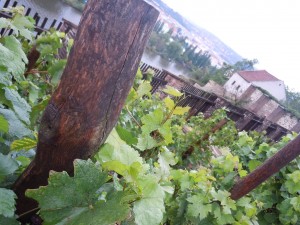Snowstorms canceled two of our four Vineyard Management classes at Kirkwood Community College in February, and the weather trend seems to be continuing. I know our instructor, Lucas McIntire, would like to get started on pruning lessons, but as the winds picked up and snow began to fly even today – in mid-March – the more sensible option was a webinar.
The live session, by the Northern Grapes Project, taught us more about soil sampling and petiole, or tissue, analysis. For grape-growing beginners like me, the petiole is the stalk that joins the leaf to the stem and is used to analyze the health of established vineyards.
Soil is best adjusted one or even two years before planting and soil tests are essential to determine which nutrients and micronutrients are needed. “If you’re only going to test your soil once, the best time is before planting,” Carl Rosen, of the University of Minnesota, said during the webinar.
The other presenter, Paul Domoto, is from Iowa State University. Among his advice on petiole analysis, he noted that nutrients should not be applied to a vineyard unless there is a proven need. Besides being a waste of money, over-application of some nutrients can be toxic to the vines.
We’ll be indoors again, tomorrow, with hopes that the snow will subside by our next sessions in late March so we can get into the vineyard. In the meantime, if you’re interested in learning much more about vineyards than I can describe here, check out the Northern Grapes Webinar Series.


No Comments Yet